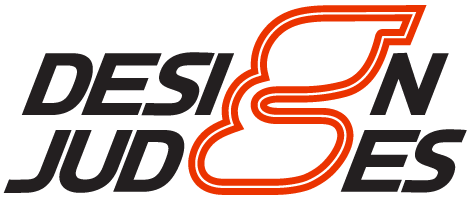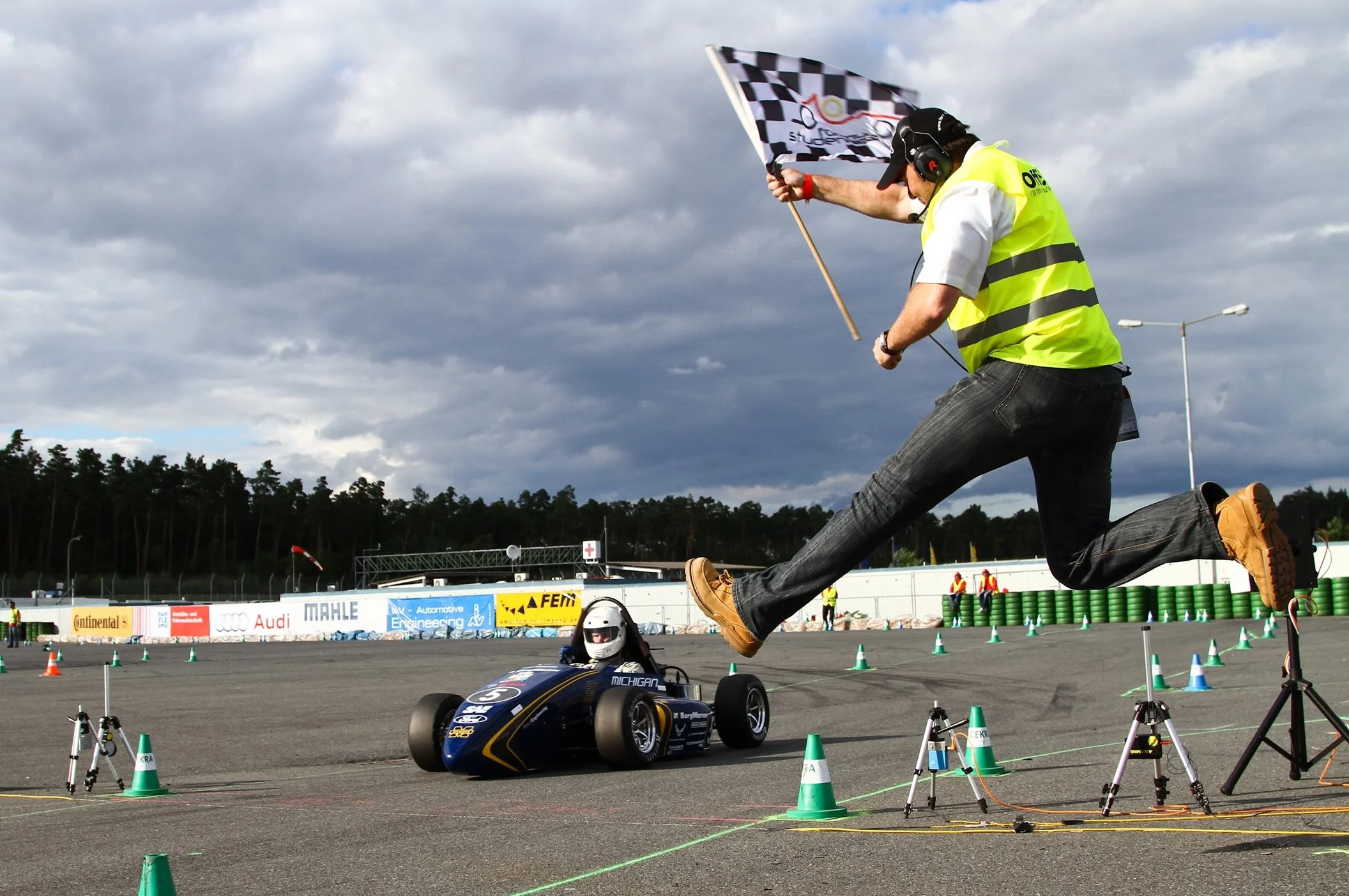Setting Winning Priorities
Disclaimer
I haven’t competed in FSAE since 2010; but when I did, my team won the dynamic events overall, reached #1 in the world rankings, set world records in the acceleration event, and challenged the establishment and other teams on 3 continents. My professional career has followed a similar path, particularly on that last point. Use this advice with caution.
Let’s start with a simple question: Why are you doing Formula SAE?
If your goal is to learn about brakes, engines, vehicle dynamics, electronics, or aero, then please click the back button to read through the other great articles on this site.
But I have to admit something to you readers: I never wanted to learn any of those things…I wanted to WIN. I wanted to go fast and collect trophies. I wanted the Technical Director of an F1 team to notice* how fast we were. And I bet that most of you want these things as well. Formula SAE is a competition, after all, not a charity or a class.
So, what does winning mean?
For some, winning may very well mean placing 1st in a competition, achieving a #1 world ranking, or winning a specific event.
For many more, winning means scoring a certain number of points, doing better than last year, or just finishing endurance.
For others, winning could mean just showing up, passing tech, or making it to a dynamic event. [I’ve been here, too – our 08 car did not turn a wheel in anger at competition. I wouldn’t wish that experience on my worst enemies.]
What do all these definitions of winning have in common? There’s no mention of engineering!
Pretty crazy, right? Isn’t Formula SAE an engineering competition?
Well, actually NO. Formula SAE is a product and team competition where engineering is involved. And in the 16 years that I’ve been involved in this series, this has been the hardest concept for teams to grasp.
So, let’s dig into it.
You’ve decided that you want to win. You’ve defined your goals for the season - maybe even for several seasons across your entire time in school. This is the part that many teams do very well: they have real goals to aim for and measure against. If you don’t have goals, you better get some, and quickly!
Next is the tricky part. How do you convert team goals into actions?
One popular approach to address this very challenging issue is called decomposition (basic reference here). Essentially, decomposition means that we break down a simple definition of success into smaller, measurable, and actionable requirements. Systems engineers spend their entire careers devising smart ways to decompose top-level goals in this way to make sure that things actually work. Let’s have a look at an example below.
Here’s our top-level goal [also called a Level 0 Requirement]:
0.1: The team shall finish the endurance event.
We then de-compose this into Level 1 Requirements below. What are the minimum things needed to complete endurance? Here’s my view of it:
1.1: The car shall complete the endurance event.
1.2: The drivers shall operate the car successfully for the duration of the endurance event.
1.3: The team shall not be disqualified from the endurance event.
Then we go deeper, to the Level 2 Requirements. These are all decomposed from the Level 1 Requirements.
First, we decompose the Car functions:
2.1: The car shall complete all required laps of the endurance course within the maximum time to score points.
2.2: The car shall withstand the loads and environments of the endurance event.
2.3: The car shall not run out of fuel or other consumables during the endurance event.
2.4: The car shall be able to perform a driver change successfully.
Next up is the Competition:
2.5: The car shall be able to pass all inspections and rules checks that are applicable to scoring in the endurance event.
2.6: The drivers shall be able to pass all inspections and rules checks that are applicable to scoring in the endurance event.
2.7: The team shall be ready to participate in the endurance event at the scheduled time.
2.8: The drivers shall operate the car without being disqualified by the marshals.
Last but not least, the Drivers:
2.9: The drivers shall be physically capable of operating the car to complete the endurance event.
2.10: The drivers shall have the proper training and equipment to complete the endurance event.
2.11: The drivers and race crew shall perform a driver change successfully.
And there we have it: We took a simply stated but very challenging goal – to finish endurance - and broke it down into specific requirements that your team can work to achieve. This could continue to lower and lower levels if desired. For example, a modern road car stability control system can have 8-10 levels of requirements, involving dozens of systems engineers for several years to sort out.
The cool part is that this works for ANY product, ANY goal. We could change it to: ‘score 800 points at Formula Student Germany’, or ‘win the acceleration event’, or even ‘land a new title sponsor’. The decompositions are different, but the principle is the same.
Now, let’s forget all this nerdy stuff and get back to winning.
Are your team’s actions supporting your team’s definition of winning?
Of the requirements above, how many does your team actually work on? How many does it ignore entirely?
How confident are you that you can meet these requirements? Is your team balancing time, money, and resources appropriately across those requirements?
You might even be actively working against some of your requirements! It happens all the time in industry, so check that first - it’s the easiest way to improve.
“But we don’t have time for this systems stuff. We’re already too busy working on the car!”
You’re probably right. After all, building and racing a Formula SAE car is a massive challenge. I know because I helped build 5 cars for 8 competitions.
But there’s a secret option here: You can do less!
I know it sounds crazy. But let’s go back to the example goal of finishing endurance. Which option below supports that goal more?
Option 1: Spend 2 extra days doing CAD and FEA to take another 80 grams out of last year’s front uprights. The suspension design judge gives you 0.5 more points out of 25 for the suspension section. Your team’s design score does not change. Your car leaks oil in the driver change and is DQ’d.
OR
Option 2: Fix any glaring problems with last year's upright design, use lessons learned last year to manufacture them faster, and build the car 2 or more days sooner. Add 2 days of testing driver changes and hot re-starts before competition. Your team finds and fixes the oil leak path that would have DQ’d you at the driver change.
Option 1 is cool and fun for some people, but it isn’t strongly connected to any of the requirements for this team’s goal. Mass savings may be somewhere in the decomposition, and a level under that, "Reduce mass on the front uprights." But you have to look at the whole decomposition - all the way back up to the top-level goal - to weigh the importance of upright mass against all other requirements.
Option 2 connects directly to 2.4, 2.5, 2.6, and 2.11. It directly improves this team’s ability to meet its goal. And I’ve seen many teams fail endurance in the driver change.
Which option is better for this example team? I’ll leave that decision to you.
TL;DR
Do you want to win? Aligning your actions with your goals is the BEST way to win.
Are your team’s actions supporting your team’s goals?
Do more thinking about how you can meet all your Level 1 and 2 requirements to achieve your goals. And invest in those things.
Work on what matters.
PS:
You might say, “Ryan, this article is useless. Our team finished the last 6 competitions in the Top 10, and even won a couple of them. We already do all this.”
First, I’d congratulate you, because that level of performance is incredibly impressive. Only a few teams in FSAE history have achieved that. Please get in touch, because I’d like to talk to you about a job.
Next, I’d ask you to wait a bit, because I’ll cover winning at higher levels in future articles.
But in the meantime: Are you completely sure that you’ve addressed all the functional requirements to achieve your team’s goals? Or did you just get lucky?
*I did in fact get a Formula 1 Technical Director’s attention. Ross Brawn - of Brawn GP, Ferrari, and Benetton fame - looked at our car during FSUK 07 at Silverstone. We showed him some shiny things: custom dampers we designed in-house, the world’s first cast magnesium oil pan made from an SLA pattern, and dyno results showing 63 lb-ft of torque!
But Ross Brawn didn’t care, because Ross Brawn absolutely knows what matters.
He immediately noticed that our rear diff was crooked due a janky mount repair from an awful design. His first – and only - words to me were, “Is that…diff square to the rear of your car?” After catching my sheepish grimace, Ross Brawn kept on walking through the pits. So much for Ryan Kraft’s F1 career…





